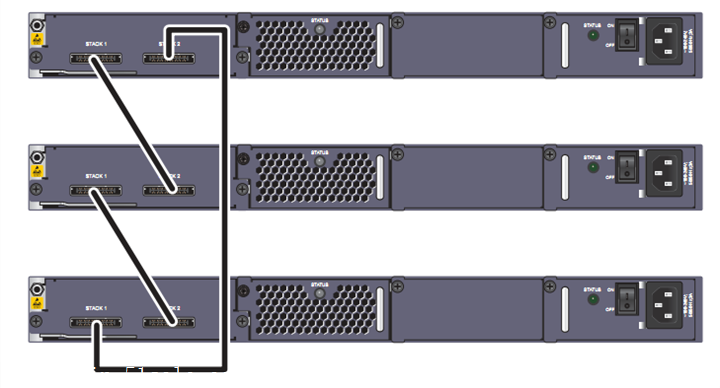In some cases, a single Industrial Switch cannot meet the needs of the site, so the technology of industrial switch stacking appears. Multiple industrial switches are combined to work together, which can provide more ports in a limited space. What is the significance of industrial switch stacking?
Stacking refers to combining more than one switch to work together to provide as many ports as possible in a limited space. Multiple switches are stacked to form a stacking unit. The stackable switch performance index has a parameter of 'maximum stackable number', which refers to the maximum number of switches that can be stacked in a stacking unit, representing the maximum port density that can be provided in a stacking unit.
The two concepts of stack and cascade are both different and related. Stacking can be seen as a special form of cascading. The difference between them is that the distance between cascaded switches can be very far (within the scope of media), while the distance between multiple switches in a stack unit is very close, generally not more than a few meters; Cascading generally uses common ports, while stacking generally uses special stacking modules and stacking cables.

The mainstream industrial switches in the market can be divided into two categories: stackable and non-stackable. Among the industrial switches that are said to be stackable, there are two types of virtual stack and real stack.
The so-called virtual stack is actually the cascade between industrial switches. Industrial switches are not stacked through special stacking modules and stacking cables, but through Fast Ethernet ports or Gigabit Ethernet ports. In fact, this is a disguised cascade.
Virtual stacked multiple industrial switches can be managed as a logical device in the network, which makes network management easier.
The advantage of stacking is that it will not cause performance bottlenecks because it can increase the backplane bandwidth of industrial switches without causing performance bottlenecks. Stacking can provide high-density centralized network ports in the network. According to different devices, it can generally support up to 8 layers of stacking, which can provide hundreds of ports at a certain location. The stacked device becomes a network device in the process of network management. As long as it is assigned an IP address, it is convenient for management and also saves management costs.
The disadvantage of stacking is mainly limited by equipment. Not all industrial switches support stacking. Different manufacturers and models require specific equipment support for stacking. Due to the limitation of the length of stacked cables, the distance between stacked industrial switches is required to be very close. In addition, the equipment of different industrial switch manufacturers is sometimes not very compatible, so it is very difficult to stack the equipment of different industrial switch manufacturers.
Contact: sales
Phone: 18688787693
E-mail: sales@hsindustrialswitch.com
Add: Room 608, Building B,GaoXinQi TEC Park,Baoan District, ShenZhen,China